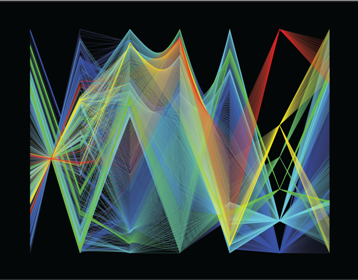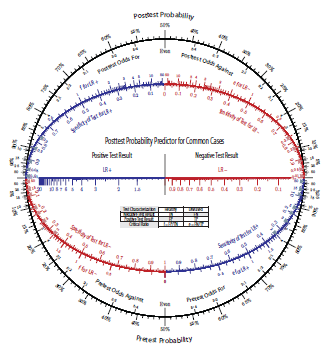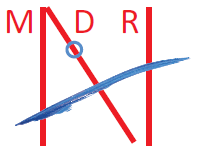 Those of us who enjoy our expeditions through the lost world of nomography quickly discover that many original sources that are still considered masterpieces in the field have never been translated into English. In my case this is a serious handicap, and I find myself struggling through the texts trying to understand the rationale behind the beautiful nomograms I see on the printed page. Nomography and its predecessors were invented in France and only later spread to such places as Germany, the U.S, Britain, Russia and Poland. Today it seems to me that most research appears in Czech journals. In addition to the language difficulties, many of the original sources are in obscure, hard-to-find journals.
Those of us who enjoy our expeditions through the lost world of nomography quickly discover that many original sources that are still considered masterpieces in the field have never been translated into English. In my case this is a serious handicap, and I find myself struggling through the texts trying to understand the rationale behind the beautiful nomograms I see on the printed page. Nomography and its predecessors were invented in France and only later spread to such places as Germany, the U.S, Britain, Russia and Poland. Today it seems to me that most research appears in Czech journals. In addition to the language difficulties, many of the original sources are in obscure, hard-to-find journals.
In 1982 H.A. Evesham produced his doctoral thesis, a review of the important discoveries in nomography. It is often cited in other works, but unless you know someone who knows someone, it is very difficult to find—I have never been able to locate a copy. However, just recently Mr. Evesham’s thesis has been professionally typeset and released as a book (click here or here) by Docent Press under the aegis of Scott Guthery. If you have an interest in the theoretical aspects of nomography beyond the basic construction techniques of most books and of my earlier essays, you will appreciate this book as much as I do. Mr. Evesham does a wonderful job of weaving mathematical discoveries in nomography from many contributors into a readable but scholarly work.
Continue reading →
 I am happy to announce
I am happy to announce  Last month Joe Marasco, Leif Roschier and I published an article on Bayes’ Theorem in The UMAP Journal that included a foldout of large circular nomograms for calculating the results from it. The article, Doc, What Are My Chances?, can be freely downloaded from the
Last month Joe Marasco, Leif Roschier and I published an article on Bayes’ Theorem in The UMAP Journal that included a foldout of large circular nomograms for calculating the results from it. The article, Doc, What Are My Chances?, can be freely downloaded from the  I want to announce that my fellow collaborators in nomography, Joe Marasco and Leif Roschier, and I have a new website called
I want to announce that my fellow collaborators in nomography, Joe Marasco and Leif Roschier, and I have a new website called  Part I of this essay provided background information that demonstrates the difficulty of the problem of mental extraction of 13th roots and the efforts of calculators to master it. But can it be possible for us to extract 13th roots of 100-digit numbers without devoting portions of our life to it? With a basic talent in mental arithmetic and some study, it can certainly be done, even if not in record time. We present a new method that involves no logarithms, no antilogarithms and no factoring, one that works with 13th powers that end in 1, 3, 7 or 9 (the cases attempted by record holders). The memorization consists of one table and a few formulas. A printer-friendly PDF version of Parts I and II is linked at the end of this essay.
Part I of this essay provided background information that demonstrates the difficulty of the problem of mental extraction of 13th roots and the efforts of calculators to master it. But can it be possible for us to extract 13th roots of 100-digit numbers without devoting portions of our life to it? With a basic talent in mental arithmetic and some study, it can certainly be done, even if not in record time. We present a new method that involves no logarithms, no antilogarithms and no factoring, one that works with 13th powers that end in 1, 3, 7 or 9 (the cases attempted by record holders). The memorization consists of one table and a few formulas. A printer-friendly PDF version of Parts I and II is linked at the end of this essay. Mental calculators of note (so-called “lightning calculators”) developed areas of expertise in performing calculations that seem astonishing, even unbelievable, to the rest of us. One such specialty is calculating the 8-digit root of a 13th power of 100 digits. Achieving record times historically required massive memorization and calculating speed, racing through a procedure that remains a mystery to most people. Part I of this essay provides a historical overview of the extraction of 13th roots, including the methods used by a few mental calculators, methods that largely rely on a mix of intensive mental calculation and large-scale rote memorization. It demonstrates the creativity and drive of these marvelous people.
Mental calculators of note (so-called “lightning calculators”) developed areas of expertise in performing calculations that seem astonishing, even unbelievable, to the rest of us. One such specialty is calculating the 8-digit root of a 13th power of 100 digits. Achieving record times historically required massive memorization and calculating speed, racing through a procedure that remains a mystery to most people. Part I of this essay provides a historical overview of the extraction of 13th roots, including the methods used by a few mental calculators, methods that largely rely on a mix of intensive mental calculation and large-scale rote memorization. It demonstrates the creativity and drive of these marvelous people. Those of us who enjoy our expeditions through the lost world of nomography quickly discover that many original sources that are still considered masterpieces in the field have never been translated into English. In my case this is a serious handicap, and I find myself struggling through the texts trying to understand the rationale behind the beautiful nomograms I see on the printed page. Nomography and its predecessors were invented in France and only later spread to such places as Germany, the U.S, Britain, Russia and Poland. Today it seems to me that most research appears in Czech journals. In addition to the language difficulties, many of the original sources are in obscure, hard-to-find journals.
Those of us who enjoy our expeditions through the lost world of nomography quickly discover that many original sources that are still considered masterpieces in the field have never been translated into English. In my case this is a serious handicap, and I find myself struggling through the texts trying to understand the rationale behind the beautiful nomograms I see on the printed page. Nomography and its predecessors were invented in France and only later spread to such places as Germany, the U.S, Britain, Russia and Poland. Today it seems to me that most research appears in Czech journals. In addition to the language difficulties, many of the original sources are in obscure, hard-to-find journals. I have researched and written about methods of mental calculation over the years, and I’m often surprised at the ingenuity evident in the mathematical methods developed specifically for it. Based on my Lightning Calculator series of essays
I have researched and written about methods of mental calculation over the years, and I’m often surprised at the ingenuity evident in the mathematical methods developed specifically for it. Based on my Lightning Calculator series of essays  Part I of this essay described and analyzed Charles Lallemand’s L’Abaque Triomphe, the first published example of a graphical computer called a hexagonal chart. Here we discuss the mathematical principles behind hexagonal charts and provide examples of these charts from the literature of the time. The related development of triangular coordinate systems is also covered in this second part. Trilinear diagrams, a simpler offshoot of triangular coordinate systems, are still seen today in fields such as geology, physical chemistry and metallurgy (as shown to the left). A list of references is provided as well. A printer-friendly Word/PDF version with more detailed images is linked at the end, with a hexagonal overlay in the appendix that can be used to exercise these charts.
Part I of this essay described and analyzed Charles Lallemand’s L’Abaque Triomphe, the first published example of a graphical computer called a hexagonal chart. Here we discuss the mathematical principles behind hexagonal charts and provide examples of these charts from the literature of the time. The related development of triangular coordinate systems is also covered in this second part. Trilinear diagrams, a simpler offshoot of triangular coordinate systems, are still seen today in fields such as geology, physical chemistry and metallurgy (as shown to the left). A list of references is provided as well. A printer-friendly Word/PDF version with more detailed images is linked at the end, with a hexagonal overlay in the appendix that can be used to exercise these charts.